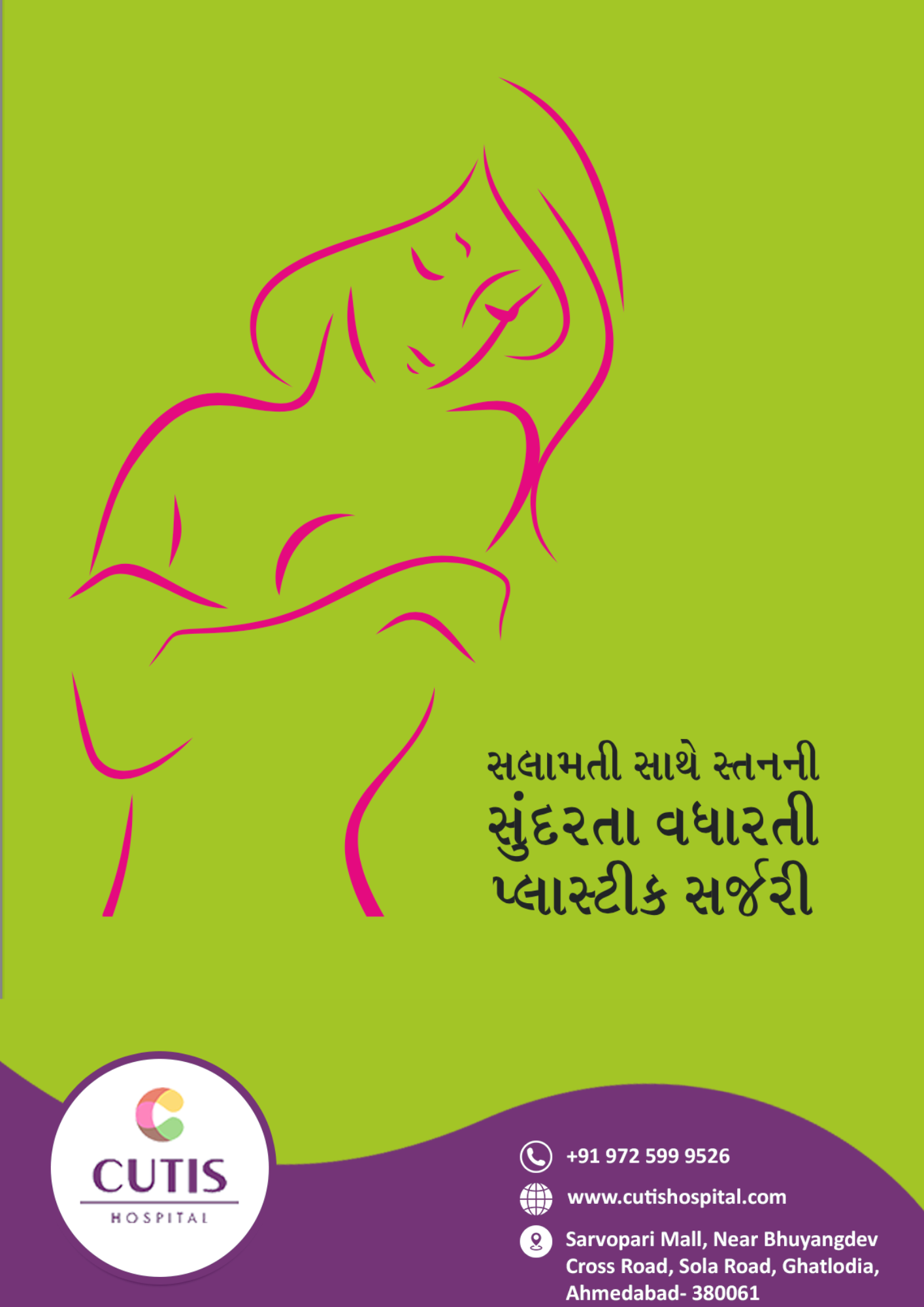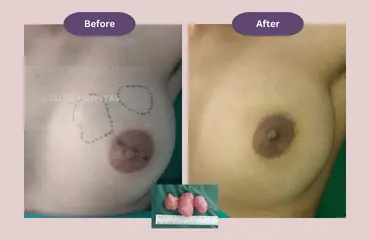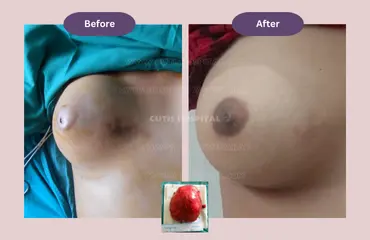At Cutis Hospital, Ahmedabad, Dr. Chintan Patel, a gold medalist plastic surgeon, offers expert removal of breast lumps and cysts using minimally invasive excision. With over 20+ years of experience, he ensures scar-minimizing techniques, accurate diagnosis, and compassionate postoperative care focused on women's health and cosmetic outcomes.
A breast lump is a mass that may vary in size and texture and may or may not cause any pain. It may or may not be cancerous. A breast cyst is one type of breast lump. It is a fluid-filled sac that is oval/round in shape with distinct edges. A cyst is usually benign (non-cancerous) in nature.
A breast lump may result from -
A breast lump can be removed via various surgical procedures -
The recovery period depends upon the type of the procedure. A surgeon will instruct a patient regarding the follow-up care and follow-up appointments for further care before the discharge.
The aftercare may include:
At Cutis Hospital,
We have a team of skilled surgeons
Expert nursing staff
Advanced surgical tools
Sanitized ambiance and tools



A breast lump is a mass that develops inside the breast and varies in size. The texture of a breast lump/mass may even vary depending upon its type. It may feel hard or spongy. Some breast masses may be painful; however, some breast lumps may stay unnoticed until an imaging test. The majority of the breast masses are non-cancerous in nature.
Yes; there are different types of breast lumps.
Cysts
However, a cyst may reoccur.
Fibroadenoma
Intraductal papilloma
Benign Tumors
You may notice a breast mass due to hormonal changes during menstruation. However, it may disappear on its own. It is essential to consult with a doctor as early as possible if the lump does not disappear. A doctor can determine the best course of treatment after performing various imaging tests, such as MRI, mammogram or ultrasound. These tests can reveal details of the lump and surrounding tissues. If a lump is painful, then a doctor may recommend biopsy in order to determine a lump’s nature (malignant or benign) and to determine the further course of treatment.
At Cutis, a doctor will determine whether a biopsy is necessary after performing a formal physical examination. A biopsy may be performed in four processes.
Fine Needle Aspiration biopsy
Core needle biopsy
Surgical biopsy
Lymph node biopsy
At Cutis, a surgeon may carry out different types of surgeries for breast lump removal. The correct surgical procedure is determined after examining the medical imaging tests. At Cutis, a surgeon will discuss the procedure in details with a patient along with the risks associated with a surgical treatment or the risks of not undergoing the correct medical treatment.
A surgical procedure is determined based upon the following factors.
The following procedures may be performed for the removal of breast lump.
Lumpectomy
Quadranectomy
Radical mastectomy and Mastectomy
The recovery period depends upon the type of surgical procedure. At Cutis, a surgeon will provide detailed instructions with regards to the follow-up treatment and care before discharge. It is essential to immediately contact a surgeon if you notice any redness, pain or swelling.
A patient may experience itching and sensitivity when the nerves start growing after the surgery. This feeling goes away with time. A drainage tube may remain in place until the follow-up appointment.
There are risks associated with any type of surgery. You may notice bleeding, infection, swelling, pain, scar tissues or change in a breast’s appearance after any lump removal surgery. However, our expert surgeons try to minimize the number of perioperative or postoperative complications as much as possible.
It is essential to take excellent care of the surgical site after the procedure to prevent infection and scarring.
Lumpectomy is an outpatient procedure unless there are complications.
A lengthy hospital stay is necessary for quadranectomy, radical mastectomy and mastectomy.
The aftercare is as follows.
In most scenarios, the fluid of a large breast cyst is released using a syringe. However, birth control pills or other hormones may be used for the treatment of breast cysts in some scenarios. It may become necessary to surgically remove the cysts.
Cutis Hospital is conveniently located in Ghatlodia, Ahmedabad, making it easily accessible via multiple modes of transportation. Below are the various ways you can reach our facility:
Sardar Vallabhbhai Patel International Airport: Located approximately 12.7 km from Cutis Hospital, offering convenient access for patients traveling from outside the city.
Chandlodiya Railway Station: Approximately 2.4 km from Cutis Hospital.
Ahmedabad Railway Station: Around 11 km from our center.
GSRTC:
Ahmedabad Central Bus Station (GSRTC): About 10.3 km from the hospital.
AMTS:
Bhuyangdev Cross Road Bus Stop: Just 500 meters from Cutis Hospital.
BRTS:
Bhuyangdev BRTS Bus Stop: Only 170 meters from our center.
We provide effective surgical and non-surgical treatments for all parts of the body. At Cutis Hospital, our cosmetic and plastic surgery team is committed to giving patients safe and high-quality care.